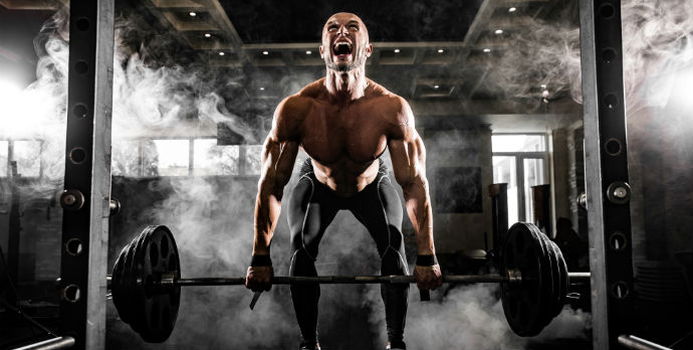If you’re like many Americans, you’ve probably received a boatload of fitness advice — whether it be from personal trainers, friends — or even people who’ve never set foot in a gym. It’s difficult to know which fitness advice is legit, and which can be classified as some of the worst fitness advice.
1. Avoid Weightlifting if You Want to Stay Small
Strength training is important for strength, keeping your metabolism high, and staying tight and toned. Having muscle mass means your body will burn extra calories (and fat) all throughout the day, even when you’re resting. And while it’s true muscle weighs more than fat, less body fat means a smaller, tighter-looking figure. A combination of weight training and cardiovascular exercise is your best bet when you want to stay slim and trim (and small).
2. The Scale Measures Your Progress
The scale can be a good indicator of how healthy you are but it doesn’t measure progress — especially when it comes to working out. Exercise often leads to muscle increases, and the weight on the scale doesn’t reflect that. Instead of weighing yourself regularly, focus on how well your clothes fit — and how good you look in the mirror.
3. No Pain No Gain
You certainly don’t have to kill yourself in the gym day after day to see results. In fact, just the opposite is true. If you’re dreading super intense sweat sessions, you might be more likely to skip working out altogether. Slow and steady does the trick — work up a good sweat, but still be able to catch your breath and have brief conversations. And be sure to focus on healthy eating habits, which is the best way to get results fast.
4. Exercise is the Only Weight to Lose Weight
Dieting is the best way to shed pounds, regardless of how much you’re working out. While exercise can help speed the process along, working out regularly isn’t a guarantee you’ll lose weight. Burning off more calories than you take in is the key to effective weight loss — whether you're working out or not — and dieting (calorie restriction) is often the best weight loss strategy.
5. You Need a Gym Membership
You certainly don’t need to hit the gym to be healthy, tight and toned. In fact, you don’t even need expensive exercise equipment to stay in shape. Run, jog, walk, bike or swim outside. Or, do strength and conditioning drills at home (burpees, box jumps, squat jumps, pushups, jumping rope, etc.). Find free workout videos online, or purchase a few free weights to stay slim and trim without setting foot in a gym.
6. Load up on Carbs for a Better Workout
Carb loading may come in handy if you have a long endurance race (longer than 1 hour) the next day, or if you’re planning a full day of being active. And it’s true that carbs are your body’s main fuel source during exercise. But you don’t have to load up on potatoes and pasta just to do regular day to day workouts — especially if you’re trying to shed pounds. Instead, focus on lean protein foods, fruits, veggies, whole grains, nuts and other healthy fats to get a good balance of essential nutrients.
7. Work Out Every Single Day
Exercise regularly, but don’t overdo it. Take at least one day off each week to allow your muscles to recover, and to get your energy back. Your next workout (after a day of rest) will be one of your best, and you’ll see results like never before.
8. Cardio is Better than Weight Training
Cardiovascular exercise (jogging, biking, etc.) is important for a healthy heart, and healthy weight management. But weight training is equally crucial to boost strength — and tighten and tone. To get the best results (regardless of your fitness and figure goals), it’s best to combine cardiovascular exercise with strength training (weight training, squats, pushups, sit-ups, etc.).
9. Workout at a Low Intensity to Burn Fat
You’ll likely burn fat when exercising for long time periods (especially longer than 30 minutes) regardless of your workout intensity, but you’ll burn more calories working out at higher intensities. That doesn’t mean you have to push yourself to the max to burn fat, but choosing a lower-intensity workout won’t burn more fat than picking up the pace.
[Image via Shutterstock]



